15 Photos Of What Working On The Set Of ‘Easy Rider’ Was Like

Working on the set of Easy Rider was more than just filmmaking—it was a wild, unpredictable road trip through the heart of 1960s counterculture.
With its mix of freedom, rebellion, and raw creativity, the production became as legendary as the film itself. In this blog post, we’re pulling back the curtain and diving into 18 behind-the-scenes photos that capture the untamed spirit of this cinematic milestone.
From Dennis Hopper’s spontaneous directorial choices to off-screen moments of tension, laughter, and pure artistic grit, each image reveals a layer of the story that never made it to the big screen. Expect dusty highways, candid campfire chats, and plenty of leather jackets and long hair.
Whether you’re a film buff or just curious about how a cult classic came to life, this visual journey offers a front-row seat to the chaos, charm, and camaraderie that made Easy Rider more than just a movie—it was a movement.
1. Peter Fonda’s Iconic Look
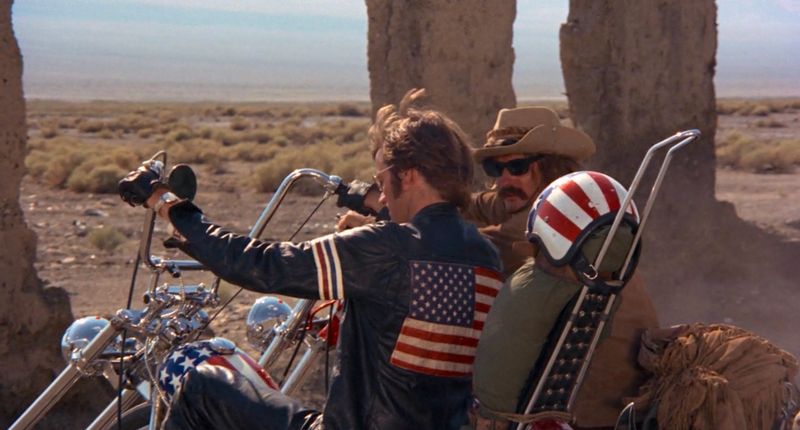
Ah, Peter Fonda—riding in on his ‘Captain America’ chopper with a swagger that could make even the toughest biker blush. His iconic jacket, adorned with the American flag, became a symbol of rebellion and freedom.
I recall Peter once joking about the jacket, saying it was so eye-catching that it could stop traffic. And, indeed, it did—both on and off set. The jacket wasn’t just a costume; it was a statement, a challenge to the establishment.
The way Peter carried himself on that bike, with the wind in his hair and a glint in his eye, was pure magic. It was as if he and the character were one, living the dream of every wanderer. He embodied the spirit of the 60s, a time when rules were meant to be broken, and freedom was the ultimate goal.
2. Dennis Hopper’s Directorial Flair
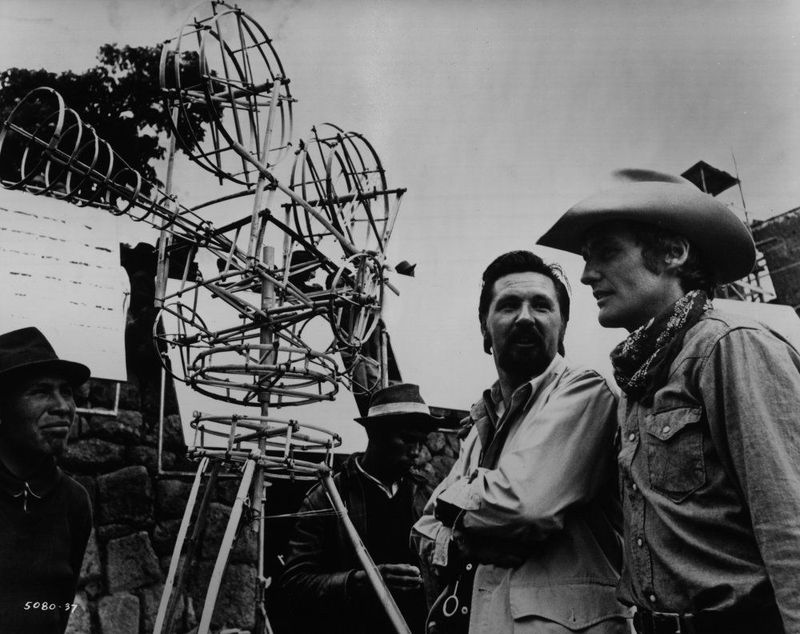
Dennis Hopper—part director, part whirlwind of creative energy. If there was a rulebook, he probably tore it up and used it for kindling. His approach to directing was as unconventional as the film itself.
I remember watching Dennis orchestrate a scene with the precision of a maestro conducting an orchestra. His intensity was palpable, and his vision, though sometimes chaotic, was undeniably brilliant. There was a sense of urgency in his direction, as if capturing lightning in a bottle.
His determination was infectious, driving everyone on set to push boundaries and break new ground. Under his guidance, ‘Easy Rider’ became more than a film; it became a movement, a testament to the power of artistic freedom. Dennis was the heart of this cinematic revolution, propelling us into uncharted territory.
3. Jack Nicholson’s Scene-Stealing Moments
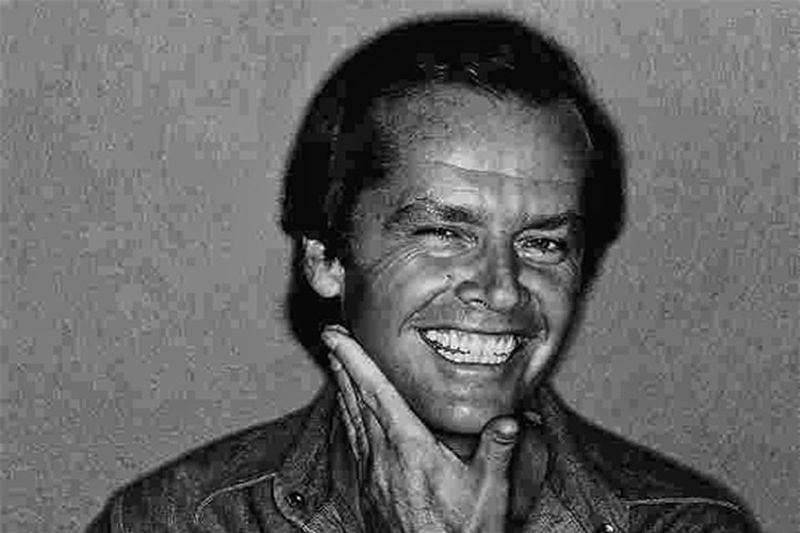
Jack Nicholson—before he was the legendary figure we know today, he was already stealing scenes like a seasoned pro. On the set of ‘Easy Rider’, his charisma was electric, and his laughter, contagious.
I remember a particular day when Jack delivered a line so perfectly that even the crew couldn’t hold back their applause. His portrayal of a lawyer turned free spirit was both humorous and profound, bridging the gap between the conventional and the counterculture.
Jack had this uncanny ability to infuse his character with layers of depth, all while maintaining an air of casual nonchalance. He was a natural, and his performance added a rich texture to the film, making it an unforgettable part of cinematic history.
4. The Unpredictable Weather
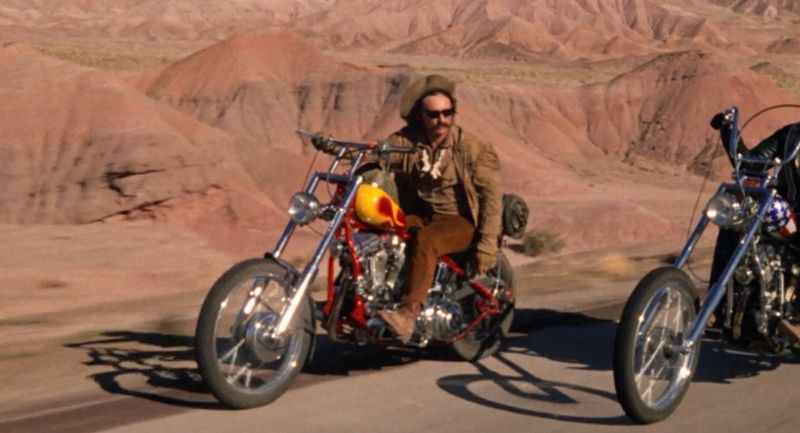
Weather—unpredictable as ever, especially when you’re filming in the great outdoors. The set of ‘Easy Rider’ was no stranger to nature’s whims, and each day brought a new meteorological surprise.
I vividly recall a day when the skies opened up, drenching everything in sight. Instead of packing up, the crew embraced the chaos, capturing scenes in the rain that added an unexpected layer of authenticity to the film.
The weather became a character in itself, shaping the narrative and testing our resilience. It was a reminder that, much like life, filmmaking is often about adapting to the unexpected and finding beauty in the unplanned.
5. The Spontaneous Shoot
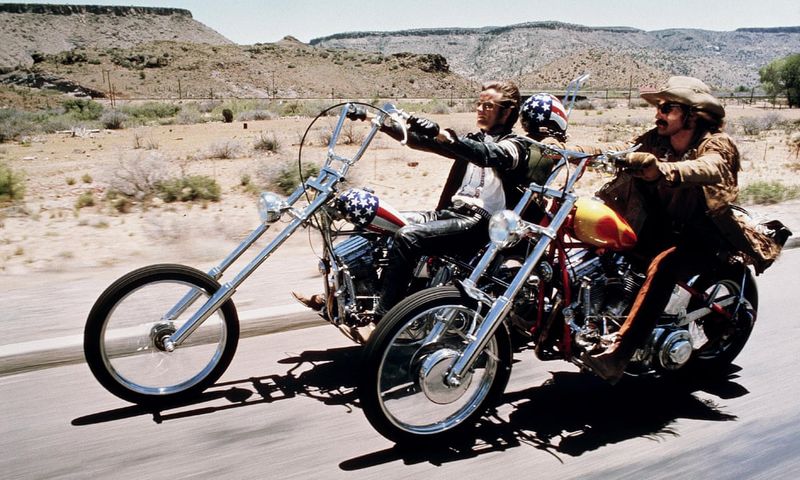
Imagine driving through the American countryside, spotting a picturesque location, and deciding right then and there to film. That’s exactly what happened on the set of ‘Easy Rider’. The crew, led by cinematographer László Kovács, often pulled over to capture the perfect shot, permits be damned. This guerrilla approach not only saved money but also gave the film its raw, authentic feel.
I remember one such day when the sun was setting, casting a golden hue over the landscape. We stopped, grabbed the cameras, and within minutes, we were rolling. The spontaneity was exhilarating, much like a child discovering a new playground.
These unscripted moments enriched the film’s narrative, weaving reality with fiction in a way that only ‘Easy Rider’ could. It was cinema in its purest form, capturing the spirit of the open road and the freedom it represents.
6. The Vibrant New Orleans
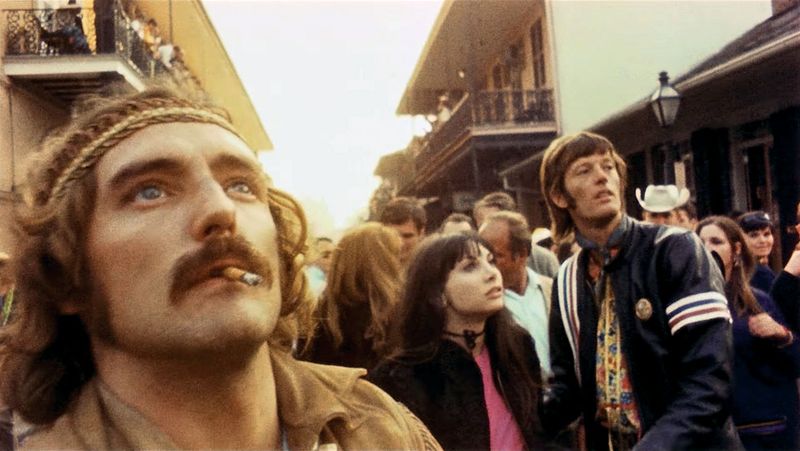
New Orleans—where the music never stops and the air is thick with creativity. Filming in this vibrant city was an experience like no other. The streets were alive with color, sound, and spirit, creating a backdrop that was as dynamic as the film itself.
I remember wandering through the French Quarter, every corner revealing a new facet of the city’s charm. The local musicians, with their soulful tunes, added a melody to our steps, infusing the set with energy and rhythm.
Capturing the essence of New Orleans on film was not just about the visuals; it was about encapsulating the soul of the city. It was the perfect setting for a film that celebrated the unconventional and the free-spirited.
7. The Psychedelic Vibe
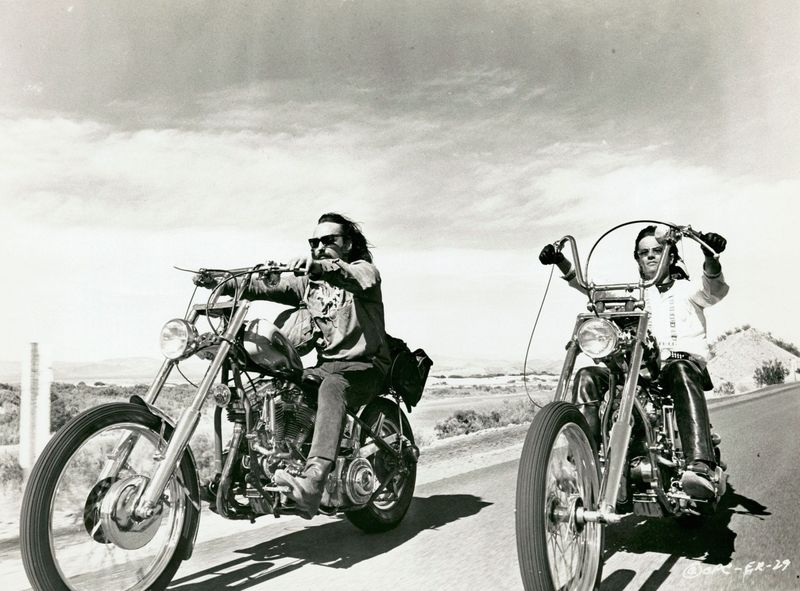
Psychedelia—a word that defined an era, and the set of ‘Easy Rider’ was a kaleidoscope of trippy visuals and experimental vibes. The influence of the 60s counterculture was evident in every frame.
I recall stepping onto the set one day, greeted by a mesmerizing display of colorful lights and patterns. It felt as though we had entered another dimension, where creativity knew no bounds. The atmosphere was electric, buzzing with innovation and artistic freedom.
This psychedelic vibe was more than just an aesthetic choice; it was a reflection of the times, a nod to the changing tides and the quest for enlightenment. It was bold, unapologetic, and utterly captivating.
8. The Infamous Conflict
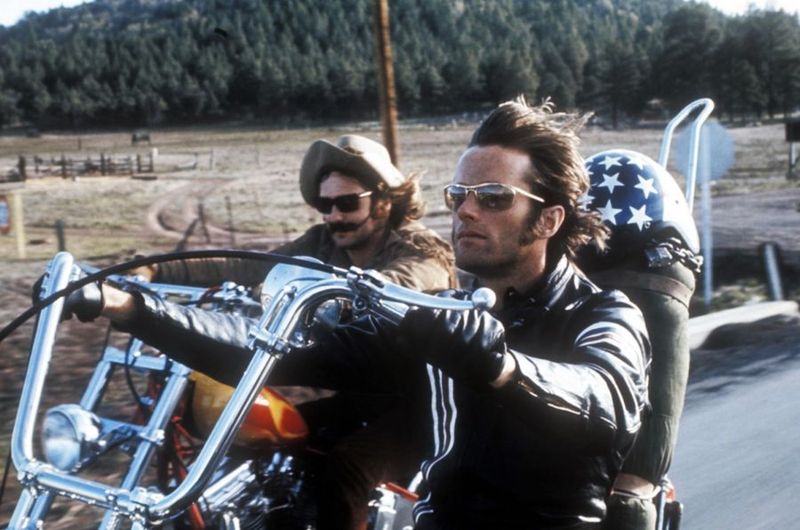
Conflict—an inevitable part of any creative endeavor, and on the set of ‘Easy Rider’, it was as much a part of the process as the filming itself. Dennis Hopper, known for his intense personality, often found himself at the center of these clashes.
One particular incident stands out in my memory. During a test shoot in New Orleans, Dennis and the crew got into a heated argument over the control of footage. The air was thick with tension, yet it was this very intensity that drove the project forward.
These conflicts, while challenging, were also a testament to the passion and commitment that everyone brought to the table. It was a reminder that art, much like life, is rarely without its struggles.
9. Susan Wood’s Candid Photography
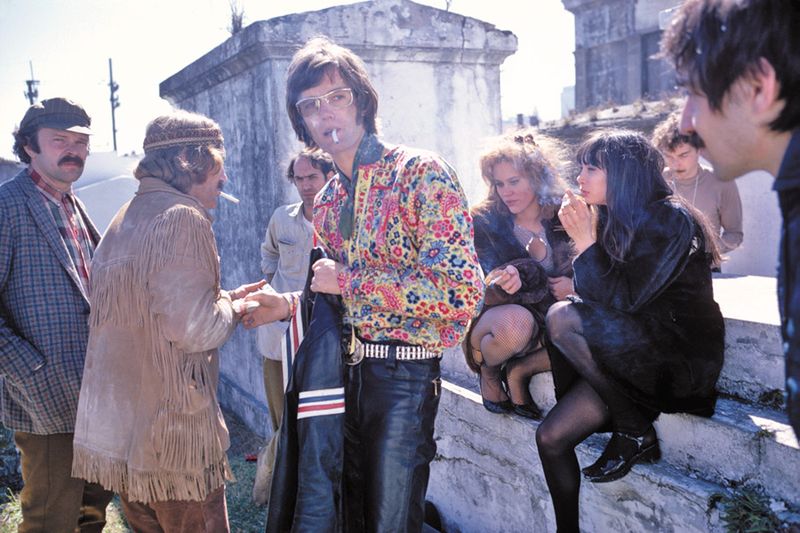
Photography—the art of capturing a moment in time, and Susan Wood was a master of it. Her candid shots from the set of ‘Easy Rider’ offer a glimpse into the world behind the camera, illuminating the faces and stories that brought the film to life.
I watched Susan work her magic, her lens like a window to the soul of the set. Her photographs were more than just images; they were narratives, each frame telling its own story.
Through her eyes, we see the laughter, the struggles, and the camaraderie that defined our days on set. Her work is a legacy, a timeless record of a film that changed the landscape of cinema.
10. The Raw American Landscape
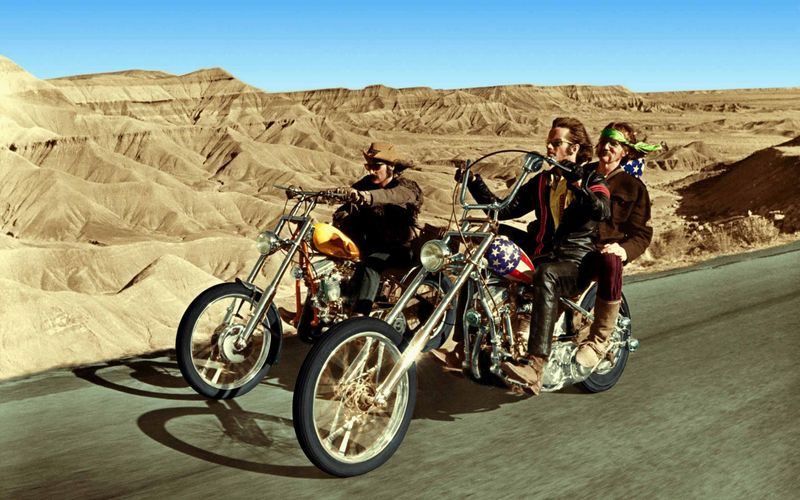
America—the land of endless possibilities, captured in all its raw beauty by the ‘Easy Rider’ crew. The vast landscapes became more than just a backdrop; they were integral to the film’s narrative.
I recall standing on a hilltop, gazing out at the open road stretching into the horizon. It was a sight that stirred something deep within, a longing for freedom and exploration. The crew worked tirelessly to capture this essence, the spirit of America in its purest form.
The landscapes were a character in themselves, shaping the journey and reflecting the themes of the film. They were a reminder of the vastness of the world and the limitless possibilities that lay beyond the horizon.
11. The Iconic Motorcycles

Motorcycles—symbols of freedom, rebellion, and the open road. The choppers used in ‘Easy Rider’ became as iconic as the film itself, embodying the spirit of the 60s.
I remember the first time I laid eyes on those bikes, gleaming under the sun. They were works of art, carefully customized to reflect the personalities of their riders. Peter Fonda’s ‘Captain America’ and Dennis Hopper’s ‘Billy’ bikes were more than just vehicles; they were extensions of the characters.
Riding those motorcycles felt like liberation, the wind in our hair and the world at our feet. They were the perfect companions for a journey of self-discovery and adventure.
12. The Experimental Soundtrack
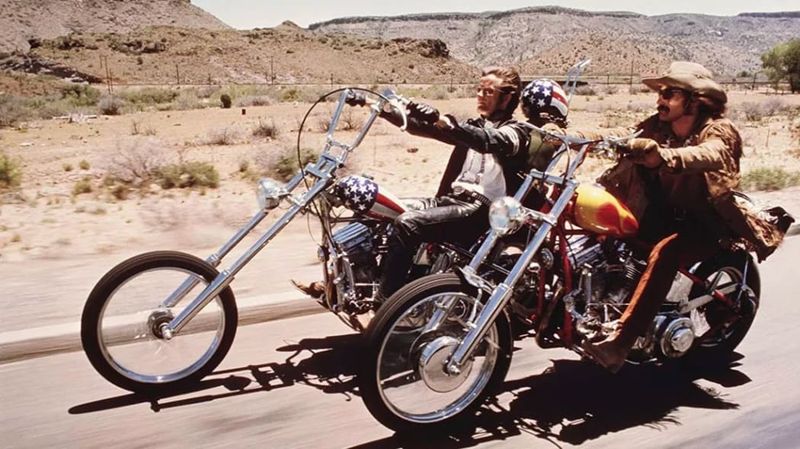
Soundtrack—an essential element that elevated ‘Easy Rider’ to iconic status. The film’s music was as revolutionary as its visuals, a blend of rock ‘n’ roll and folk that defined the era.
I remember the discussions about the soundtrack, the crew gathered around a record player, listening to different tracks. The music was chosen to reflect the mood and essence of the film, enhancing each scene with its raw energy.
From Steppenwolf’s ‘Born to Be Wild’ to The Byrds’ ‘Wasn’t Born to Follow’, the soundtrack was a journey in itself, audibly capturing the spirit of rebellion and freedom. It was the heartbeat of the film, resonating with audiences worldwide.
13. Camaraderie on Set
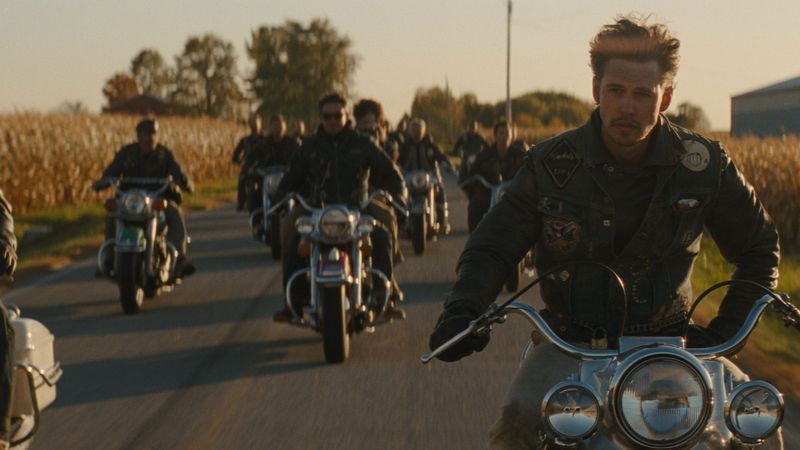
Camaraderie—a bond that formed amidst the chaos and creativity, uniting the cast and crew of ‘Easy Rider’. Despite the challenges, there was an undeniable sense of togetherness.
I fondly recall the moments between takes, where laughter echoed across the set and friendships were forged. These were the times that reminded us of the joy of collaboration, the magic that happens when creative minds unite.
This camaraderie was the glue that held the production together, fueling our passion and drive. It was a testament to the power of teamwork, and a reminder that behind every great film is a family of dreamers, working towards a common goal.
14. The Festival Scene

Festivals—a celebration of life, music, and the freedom to be oneself. The festival scene in ‘Easy Rider’ was a microcosm of the 60s, a colorful, chaotic tapestry of humanity.
I remember the energy on set that day, the air alive with music and laughter. Extras mingled with the crew, creating a scene that was both authentic and exhilarating. It was as if the boundaries between fiction and reality blurred, capturing the essence of the counterculture movement.
This scene was more than just a backdrop; it was a statement, a reflection of a generation seeking connection and liberation. It was a visual symphony, a celebration of the human spirit.
15. The Arizona Desert

The desert—a place of solitude and reflection, its barren beauty captured in Easy Rider. Filming in the Arizona desert tested every ounce of endurance, yet the reward was profound. I stood in that vast emptiness, where silence stretched farther than the horizon, feeling both insignificant and somehow eternal. The sun scorched everything, but the stillness soothed like a whisper from the earth itself.
There, time slowed. The wind carved stories in sand, and the distant mountains became monuments to patience. The desert didn’t speak, yet it said everything—about resilience, about surrender. It burned away the excess, leaving only truth.
By night, the sky transformed into a cathedral of stars, indifferent and awe-inspiring. Each moment felt sacred, fleeting, and free. In that brutal, breathtaking landscape, we found more than a film—we found fragments of ourselves, stripped raw by nature’s indifference and held in place by its quiet majesty.
